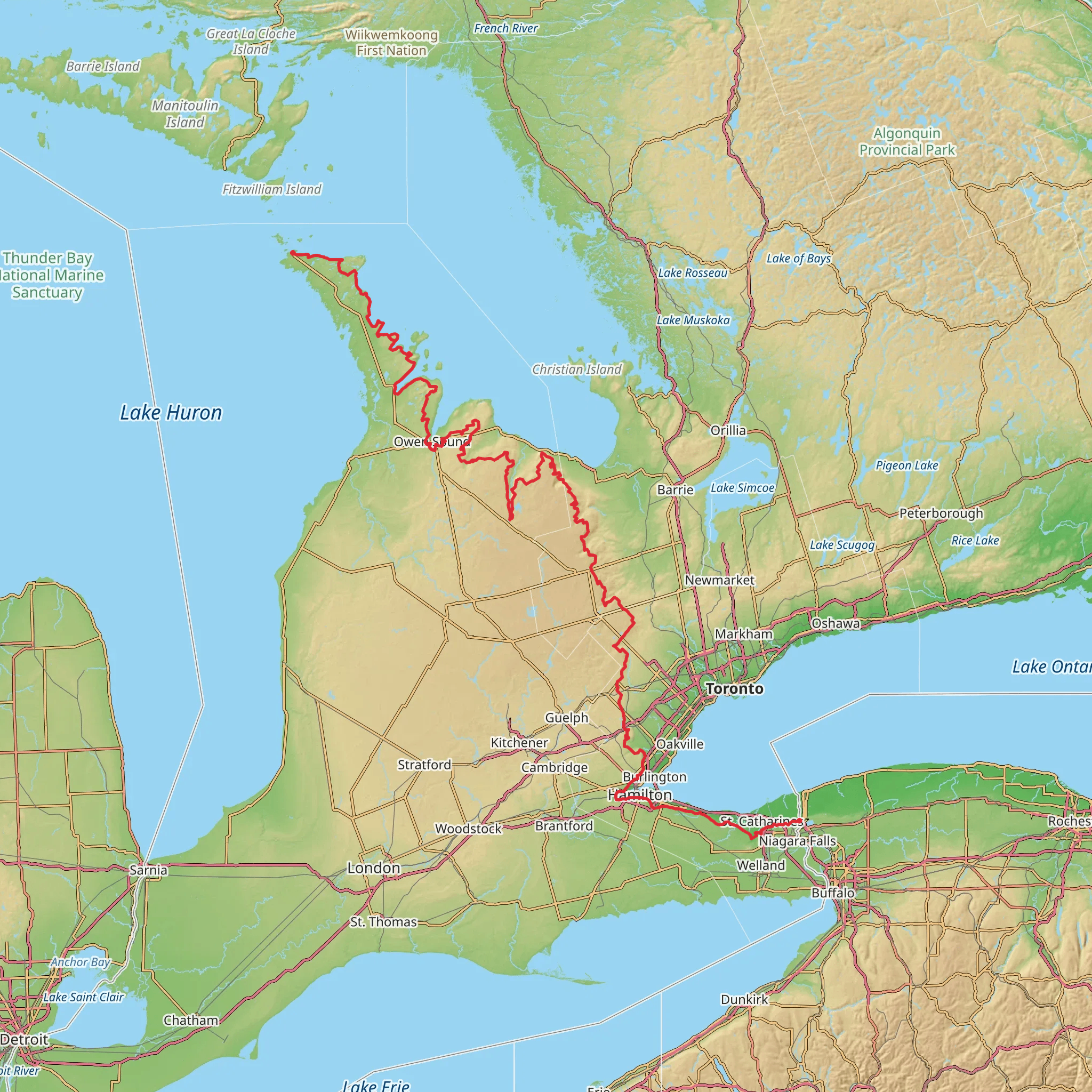Download
Preview
Add to list
More
892.6 km
~47 days
7876 m
Multi-Day
“Embark on the Bruce Trail for a historic hike through Ontario's scenic wonders and diverse wildlife.”
Spanning approximately 893 kilometers (555 miles) and boasting an elevation gain of around 7800 meters (25,590 feet), the Bruce Trail offers an immersive experience through Ontario's picturesque landscapes. Beginning near Niagara, close to the iconic Niagara Falls, the trailhead is accessible from Queenston Heights Park, which is a short drive from the town of Niagara-on-the-Lake. For those relying on public transportation, regional buses serve the area, and the nearest significant landmark is the Brock Monument at Queenston Heights.Getting to the TrailheadTo reach the starting point by car, take the Queen Elizabeth Way (QEW) to the Niagara Townline Road exit and follow the signs to Niagara Parkway and Queenston Heights Park. Parking is available at the park, which is a convenient place to begin your journey.Navigating the TrailThe Bruce Trail is a point-to-point hike, meaning it starts and ends at different locations. It is well-marked with white blazes, and hikers can use the HiiKER app for detailed maps and navigation assistance. The trail winds its way north to Tobermory, located at the tip of the Bruce Peninsula.Landmarks and SceneryAs you embark on the trail, you'll traverse the Niagara Escarpment, a UNESCO World Biosphere Reserve. The path leads through lush forests, past streams and waterfalls, and offers stunning views of the escarpment's cliffs. Notable landmarks include the Devil's Punchbowl, a dramatic ribbon waterfall, and the scenic lookouts at Rattlesnake Point and Lion's Head.Wildlife and NatureThe Bruce Trail is a haven for nature enthusiasts, with a diverse range of flora and fauna. Hikers may encounter white-tailed deer, raccoons, and a variety of bird species. The trail also passes through several conservation areas, where you can observe unique geological features and wildflowers, especially trilliums in the spring.Historical SignificanceThe region is steeped in history, with the trail itself following paths used by First Nations people and later by European settlers. The Bruce Peninsula is named after James Bruce, a colonial governor of Canada. Along the route, you'll find historical sites such as old mills and remnants of early settlements.Preparation and PlanningGiven the trail's difficulty rating and length, it's essential to plan accordingly. Hikers should be prepared for challenging sections, particularly where the trail ascends or descends steeply. It's advisable to carry a reliable source of water, food, and a first-aid kit. Weather can be unpredictable, so pack appropriate clothing and check forecasts regularly.Access Points and DistancesThe Bruce Trail offers multiple access points, allowing for shorter hikes or resupply opportunities. The trail is divided into nine sections, each managed by a local Bruce Trail club. These sections vary in length and difficulty, so hikers can choose segments that match their skill level and time constraints.ConclusionThe Bruce Trail provides a unique and rewarding experience for those seeking adventure amidst Ontario's natural beauty. With careful preparation and respect for the environment, hikers can enjoy one of Canada's premier long-distance trails and the rich heritage it traverses.
What to expect?
Activity types
Comments and Reviews
User comments, reviews and discussions about the The Bruce Trail, Ontario.
4.69
average rating out of 5
13 rating(s)

